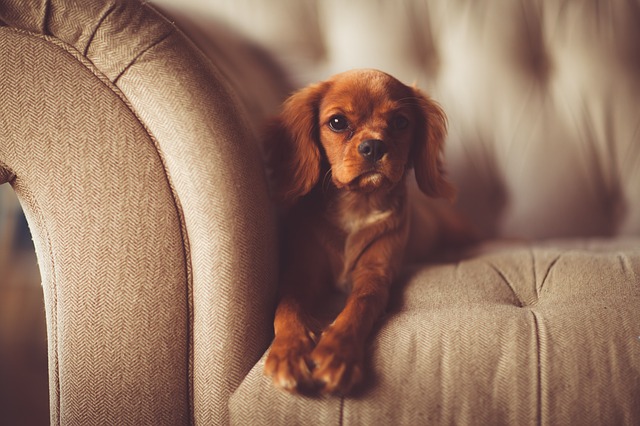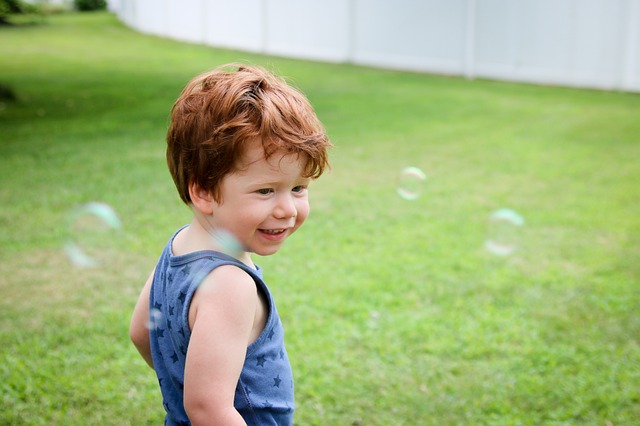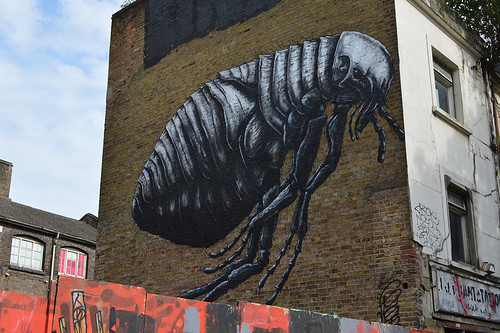Yes – gerbils can get fleas.
So to speak.
The reason is because of three very simple things:
- Fleas often take up residence in human homes, sheds and garages
- Fleas love warm places where animals are exhaling
- Fleas will crawl onto any warm creature looking for a meal
Therefore, there is always the chances that your gerbil could have a flea on its body or in its tank.
HOWEVER…
Fleas live in the environment – they do not actually ‘live’ on your gerbil.
So, if you see more than 2 live adult fleas on or around your gerbils – you may have a serious problem in your own home.
______________________________________________________________________________
 If you just see one adult flea – a large one – on your pet – you may have just brought it in that day and so killing it fast could be just what you need.
If you just see one adult flea – a large one – on your pet – you may have just brought it in that day and so killing it fast could be just what you need.
Clean out and disinfect the tank, thoroughly vacuum the room – including the curtains and other soft furnishings – then empty the vacuum too – finally throw all the suspect bedding and vacuumings in a sealed bag, outside.
You can also freeze any remaining bedding, hay and anything you are worried about for 24 hours and start afresh without worry (as the fleas and flea eggs won’t last the cold spell.
Watch closely for a week or two – and if no sign of any fleas after this – you may well have saved it. No chemicals or massive action plan required.
Good work!
______________________________________________________________________________
However, if you then start to see more fleas in and around the place – basically if you see more than 3 live adult fleas in one day – you need to take more effective action.
Therefore it is more important for you to treat YOUR home and outbuildings with a 4-stage flea preparation which kills eggs, larvae, pupae and adults (nothing less will do) and to thoroughly clean out your gerbils’ tank – than it is to treat your pet with any chemicals.
Treating your gerbil with a gerbil-safe flea treatment (not a cat, dog or bird one) only kills the adult flea who was actually on your gerbil itself – it won’t kill the other few thousand fleas that could be living in your home?
It is the same as only killing the fleas that you see on your couch rather than those in the whole house – pointless infact – and never-ending.

Important Flea Facts:
95% of the flea life cycle takes place without an adult flea present.
95% of the flea life cycle takes places not on an animal
95% of the flea population in your house isn’t killed when you treat your pet
200+ eggs can be laid in your home in a single week from just one flea
200+ eggs will most likely still hatch in your home – even if you kill that flea after a week
200+ new adult fleas can lay more than 90,000 eggs in week.
Killing adult fleas will never rid your home or pet of future flea infestations – they just keep laying eggs and hatching out new ones until it gets too cold…
Unfortunately, flea pupae can stay alive in your carpet – in a sort of stasis – for up to 2 years before hatching out into adults when the conditions are right (suddenly warm, lots of mammals moving around and increased breathing out) – so staying indoors and switching your heating on in the winter could be just what they are waiting for.
Ever wondered why you get fleas in winter?

The Life of a Flea:
To cut a long story short, here is the life of a flea, helping you understand how they function in the ecosystem that is our house. Afterwards, there are some tops tips highlighting ways that you might have tried to eradicate them and why that didn’t really work.
1: An adult flea is living somewhere nice and warm – either a friend’s home, a stable yard, a pet shop or kennels etc. She is very happy.
2: She moves about as normal – laying eggs and looking for food (blood) and warmth (the sign of a place where blood might be – ie a body) – and let’s say they land on you or are now sitting in some bedding, waiting.
3: You and/or this bedding enter your home.
4: This flea doesn’t notice anything different, so carries on laying eggs and looking for food and warmth. You probably won’t notice her for some time, nor her you.
5: This flea can lay around 10-50 eggs a day onto you, your pet, their home or your home once they are more than 24 hours old and have already eaten blood from somewhere. Baby fleas (larval grubs as opposed to small flea-looking things) can hatch themselves out in just 2 days if the conditions are right (warm and filled with CO2). So potentially the day she arrives in your home, she could have started an infestation.
6: She keeps feeding on you and your pets, and laying more eggs wherever she happens to be at the time. Common fleas (ctenocephalides spp.) don’t technically live on your pets – they wander about a bit and get shaken off with grooming and things.
7: Eventually, a week later, you finally see her and panic. You then go out and get a drop-on treatment for your gerbils – and it kills this adult flea (and freaks out your pets at the same time).
8: All her eggs though – are still in your home. They are all still maturing through their life stages – eating detritus in your carpet – and disgustingly, the blood-filled partially-digested faeces of the mother flea – making cocoons out of loose carpet and curtain fibres – and biding their time.
9: By the time you have seen and killed your one single adult flea – you are relieved – but a week has passed. The adult flea is gone and you don’t see any more fleas for a week or two. Well, of course you wouldn’t – they are all microscopic and hiding in places you don’t look. You assume your flea treatment on your pet has worked and everyone’s happy.
10: If you haven’t treat your home with a 4-stage flea treatment by now – then you may well be in for a bit of surprise in a few weeks…






Getting Rid of Fleas: Top Tips:
Fleas are a pain – and we have all had them – but many people just don’t do their research.
There is a lot of advice out there on what worked for someone, or their friend, or their friends friend – but you need to think it through and apply it to your own environment and circumstances – and to the fleas themselves.
Understand How Fleas Work:
Fleas are like most other invertebrates – like butterflies – in that they have to pass through several different life stages before they become an adult.
In the flea’s case it is an Egg first; which becomes a Larva; when fat enough it then becomes a Pupa; and finally the end result: it hatches into an Adult.
An Adult is only the last quarter of the whole process.
Therefore when you see a flea or two in your home – you must already know, by deduction, that there are Eggs, Larvae and Pupae in your home too – and what do Eggs, Larvae and Pupae become?
Use the Right Treatment:
The only way to eradicate fleas from your home or other contained environment is to therefore kill ALL 4 LIFE STAGES of the flea at the same time with the same product – and to do it properly.
Many, many people do parts of this process (which won’t work alone) – wasting chemicals, time and money – as well as exposing themselves and their pets to nasty chemicals.
When done incorrectly – it is as ineffective as spraying your lawn and children with chemicals in the hope of stopping butterflies coming into your garden.

It won’t work of course. Unless you stop them at their source, it will just continue as before, whatever it is..
So do it right and do it properly.
Don’t skip bits, don’t do things half-heartedly – and don’t just kill the adult fleas. Fleas are still here today because they are so good at surviving – so don’t help them out by leaving their eggs, larvae and pupae around all over the place.
Killing only adult fleas is like trying to eradicate trains by only removing every fourth carriage. It’s not going to happen folks…
Eradicate Fleas Effectively:
It isn’t only the right product you need – you need to use if properly too.
Basically, you need to plan to use your 4-stage flea treatment ANYWHERE humans or your pets regularly go that has soft furnishings or similar. Flea eggs (flea babies) fall from the flea wherever she is and that is where they live out most of their life cycle.
This means not only your home and living quarters, but also your garage, shed, car, caravan, loft, cabin, kennel or whatever could have a steady flea population.

And don’t take soft furnishing out of one of these rooms and not spray it – spray everything. Flea larvae don’t like the light so they often crawl into sofa cushions, soft doorstops, woven baskets and dog beds, etc. – and you don’t want to miss them.
Wash anything you can wash – and then vacuum up thoroughly afterwards and empty the bag (they can still live in the vacuumings and eventually climb out the nozzle).
Sounds like a lot of effort – but you want them gone right?
Prevent (Re)Infestation:
Stopping fleas coming into your home has got to be the best plan of all.
Using chemical-free flea/insect repellent on your dog/cat will work really well to prevent them picking up fleas from outside and bringing them home.
These won’t work if you already have a flea problem or if they visit a place which has a bad infestation – but then nor will a chemical-laden collar.
For your gerbils – this would be great news – no nasty dogs, cats or people bringing back fleas – however, they could come in on your bedding, hay and other toys just by bad luck.
Always think about where your gerbil stuff has come from, and if in doubt – unload your things outside and clean them off or put them straight in the freezer (really cold for a few days will kill off any fleas).
Also, when travelling with your gerbils or returning from a friend or family members house with your gerbils set-up – always clean them out straight away as usual – making sure though that you throw all the used bedding out properly.
Don’t want anything climbing back out of the bin bag do you?

